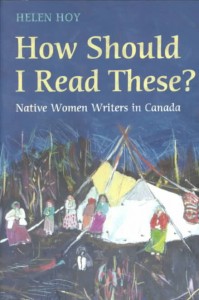Take the story about how evil comes into the world, from King’s text, and change it to tell it. First, learn the story by heart, and then tell the story to your friends and family. When you are finished, post a blog with your version of the story and some commentary on what you discovered.
I have a great story to tell you. It’s about the story about how Evil came into the world. Well, sort of. You’ll see.
Have you ever heard of General Sherman? It’s the biggest tree on earth and one of the oldest living things in the world. Well, a long, long, long time ago, way before General Sherman even joined the military, there was another really, really tall tree.
This tree was at the center of a beautiful garden. Everything and everyone in this garden was perfect. No screaming babies. No assignment deadlines. No missed buses. No sickness, no death, no hate, no hunger.
Now if this tis all beginning to sound a little too familiar, I beg you to hang in there with me. Because in this garden, there was also no unbreakable rule. There were no “thou shalt not’s” or “boys only” signs nailed to any treehouse or mysterious gardeners walking around in glowing, white togas.
The only people in this garden were three best friends: Philip, Evelyn, and Goodwin.
And they all lived in a treehouse in this tree at the center of the garden. Now, as you’ve probably imagined already, but this garden was lush and filled with every type of seed-bearing fruit tree: cherries, pears, mangosteens, papaya, you name it, or rather, Phil, Eve, and Good took turns naming them. Anyway since the three best friends were all living in the tallest tree in the garden, they had a pretty good view of the garden. So, the trio contented themselves with the abundant selection they had below and never bothered to look up.
That is, until one day…
Eve was busy shelling a basket of walnuts in the treehouse, when all of a sudden she heard a noise above her. Some people say it was the hiss of a snake. Others say that it was the coo of a dove. I’m inclined to believe that it was just the wind. Regardless, the fact of the matter was that Eve looked out the window and up.
That’s when something bright and shiny caught her attention out of the corner of her eye. There, fifteen branches up, something red stood out among the leaves. What is this? Eve wondered as she climbed up to take a closer look. Nestled among the branches was a fruit that she had never seen before. Odd. It was hard like a pear, but more spherical, like an orange. The fruit was still mostly green, which probably accounted for why she hadn’t noticed it before, but the face that was turned towards the sun had developed an attractive rosy blush. Hm, maybe Phil or Good would know. But Eve’s mouth started watering as she relieved the branch of this tantalizing new specimen and before she knew it, she had taken a bite. And another. And another. Until all that was left in her palm was the stem and two seeds.
Just at that moment Phil popped his head out the window.
–Hey Eve, are you finished shelling the wal—WOAH. What are you doing up there?
–You’ll never believe what I found, said Eve.
Then she burped. But of course, since Eve had eaten it all, she didn’t have anything left to show Phil. Eve scanned the empty branches around her.
–Well, there’s only one solution, she said, and started climbing.
–Wait up! cried Phil.
Now I forgot to mention this earlier, but this tree in the middle of the garden was many, many General Shermans tall, so high that even if you stood at the edge of the garden and looked up, you still wouldn’t be able to see the canopy. But the fruit was very tasty, and Eve knew she would do anything to share it with her friends. So, Phil and Eve climbed up higher and higher and higher… until pretty soon, they couldn’t see the roof of the treehouse anymore. In fact, they climbed so high that the leaves and the branches started looking like roots.
Eve was just about to comment on this strange phenomenon when—schoompf—she broke the last layer of branches and found herself peering out among some bushes at a whole grove of trees. She made room for Phil.
–Weird. This place looks exactly like our garden. A garden above a garden, can you believe it!?!
–But better, ‘cause look, those are exactly the fruits I was telling you of!
Eve jumped out onto firm ground and rushed to the nearest bough. Phil agreed that this fruit was indeed the premium. The pair became so engrossed in their u-picking adventure that it was sunset before they remembered Good.
–Oh hey, we should probably bring some back.
But no matter how hard they looked among the bushes, Phil and Eve couldn’t find the hole again.
–Rats! We’re stuck here, cried Eve. What good are all these apples—for that was the name Eve and Phil had decided on—if we can’t share them with Good?
–It’s all your fault, said Phil accusingly. If you hadn’t bitten that apple…
Well, Eve and Phil bickered and fought for a solid 146.25 days but there was no going back. Eventually, they settled into this new world, and had a family. But Eve and Phil never felt whole again without their best friend. No matter how many apples they ate, there was a hole in their hearts that just couldn’t be filled. Nothing could satisfy their love hunger for Good.
This is the story of how Eve-Phil came into the World and left Good behind. Throughout the ages, their children have tried to fill this hole with a myriad of things a little more sophisticated than fruit. They’ve done terrible things to one another, yet nothing could satisfy their love hunger. Eventually, one of Eve-Phil’s descendants took it upon himself to write down the story of his great, great, great, great… grandparents. By then, of course, no one could remember all the details, so his version became the version. But even if Eve or Phil did come up with a new and revised edition, it would be too late. For once a story is told, it cannot be called back. Once told, it is loose in the world. So, be careful of the stories you tell, and the stories you listen to.
—————————————————————————————————————–
In this story, I played with inversions. You probably noticed many references to Genesis 1, which is the origin story of evil that I’ve been living with daily since I’m also taking a course on Paradise Lost. Reading through other origin stories however, I realized that the Judeo-Christian tale isn’t the only one involving a Fall. Many creation tales speak of a lost relationship between the “sky people” and “earth people,” and even Charm’s story involves a free-fall from a higher paradise. In my story, however, Eve and Phil climb up instead, and their “Fall” comes about as a result of their ascension–which nevertheless leads to pain because Good gets left behind. When my brother heard the conclusion, he rolled his eyes and labeled my pun “cringeworthy.” And I would agree. But there is method to my madness! Looking beyond this “cringeworthy” play on words, I also wanted to consider the idea that “evil” itself isn’t actually an entity; rather, it’s privatio boni, or the deprivation of good. Maybe people don’t do terrible things because they’re inherently wicked, perhaps they’re suffering from a bit of love hunger.
Thanks for reading!
—————————————————————————————————————–
Works Cited:
“17 of the Most Amazing Treehouses From Around The World.” Bored Panda. Web. 01 Feb. 2016.
King, The Truth About Stories, Chapter One: You’ll Never Believe What Happened Is Always a Great Way to Start.
Milton, John. “Paradise Lost.” The Online Literature Library. Web. 01 Feb. 2016.
“The General Sherman Tree.” Sequoia & Kings Canyon. National Park Service. Web. 1 Feb. 2016.
Tooley, Michael. “The Problem of Evil.” Stanford University. Stanford University, 2002. Web. 01 Feb. 2016.


